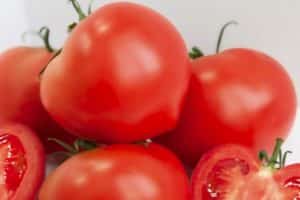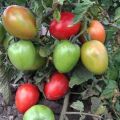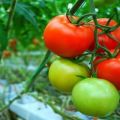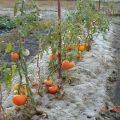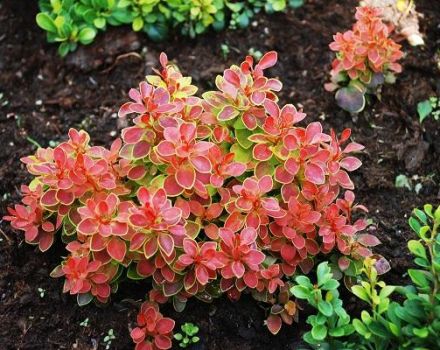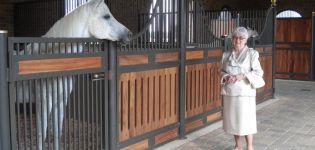Characteristics and description of the Nastena tomato variety, its yield
For most summer residents who grow tomatoes, it is important how much a tomato can be removed from one bush. In search of the necessary information about the variety, you have to spend a lot of time on the Internet. It is very difficult to find reviews about many new varieties and to be convinced of its value.
New hybrid Nastena F1 description
Nasten's hybrid is already 10 years old, it was bred by breeders Yu.I. Panchev and V.V. Clamp for outdoor use. The variety was tested in the Central Black Earth Region, and is recommended for personal consumption and growing for sale in small farms.
The first generation hybrid is not inferior to foreign analogues in terms of disease resistance. Shows good resistance to a number of diseases:
- Verticillosis.
- Late blight.
- TMV.
- Alternaria.
The undoubted advantages include the non-susceptibility of the hybrid to temporary drops in temperature and waterlogging of the soil.

Fruit characteristics and yield
The purpose of the fruit is universal. The main direction is salad, but tomatoes are also good in salting. The shape of the tomatoes. The wall is flat-round with a slight ribbing. Fruit size is closer to average. Fruits weigh from 90 to 150 g.
According to reviews, some fruits can grow up to 300 g. Ripe fruits are bright red. The pulp is juicy with a good tomato flavor. It contains a small amount of seeds and has a dense structure on the cut.
The fruits are perfectly stored. In a cool room or in the refrigerator, ripe tomatoes do not lose their presentation for 1.5 months. When harvesting, 70-90% of tomatoes have a presentation. The declared yield is from 170 to 500 kg / ha.
Description of the main characteristics of the bush
Bushes of the determinant type grow in the ground just above 1 m, are weakly leafy. The leaves are green, not large. In terms of ripening, the hybrid is early maturing. You can wait for ripe tomatoes 3 months after germination (95-100 days). From 6 to 8 tomatoes are formed in a cluster. When pouring fruit, the bush needs support in the form of a wooden or plastic stake.
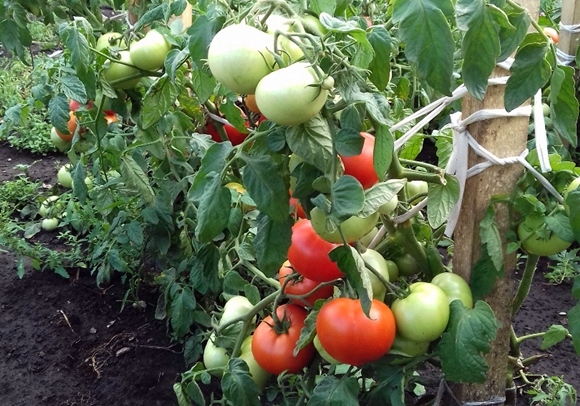
To get a good harvest, seedlings must be planted in the ground at the age of 55 days. When planting, observe the recommended layout of planting holes 50 by 60 cm. To obtain large tomatoes, the bushes should be in 1 stem.
Reviews of tomato Nastena F1
It is difficult to find reviews on the Nasten f1 tomato on the Internet. The hybrid is new and there is not much information about it.
Svetlana, Penza region
This season I tested a new hybrid Nastena F1 for me.Convinced by the characteristics and description of the variety. Grown in the open field, sang one of the first. The fruits are all even, of the same size, good taste with juicy, fleshy pulp. The variety suited me completely, the whole crop was eaten fresh. Next season I will definitely plant.
Elena, Ryazan
I have been growing a hybrid for the fifth year in a row. I like the taste, suit the yield, shape and size of the fruit.
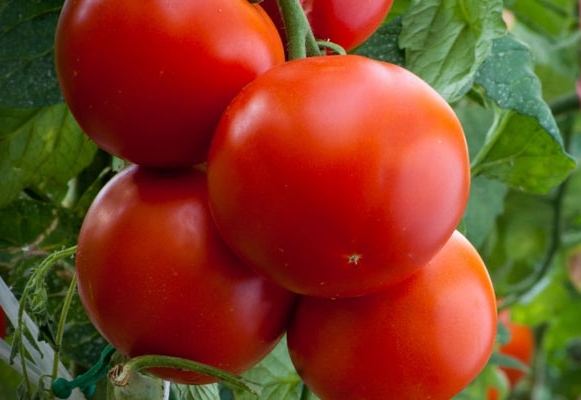
Marina, Lugansk
I added the variety to favorites. This hot summer, my Nastena, without much care, pleased with a decent harvest. It grew in the shade of a fence on sandy soil.
Rimma, Barnaul
For three years in a row we have been enjoying the delicious fruits of this hybrid. The next year I will plant it again, since the variety is very unpretentious and bears fruit well with a minimum of care on my part.
Anastasia, Krasnoyarsk
I have already had 3 attempts to grow seedlings of this variety. All three were unsuccessful. Every year the seedlings were killed by the black leg. Other varieties I grow well.

Another Nastenka
The rich variety of varieties is sometimes misleading with similar names. Summer residents are often confused. For example, along with the hybrid Nastena from the Russian Seeds firm, there is the Nastenka variety from the Altai Seeds.
Authors of Nastenka: M.A.Kotelnikova, S.N.Kondakov. This variety was entered into the state register in 2008. It can be grown both in the ground and in any type of greenhouse. The purpose of the fruit is universal. Use cases:
- Raw.
- Salted.
- In canning.
The plant is mid-season with a standard bush, determinant, requiring a garter. The bushes are covered with small leaves, the flowers are collected in simple inflorescences.
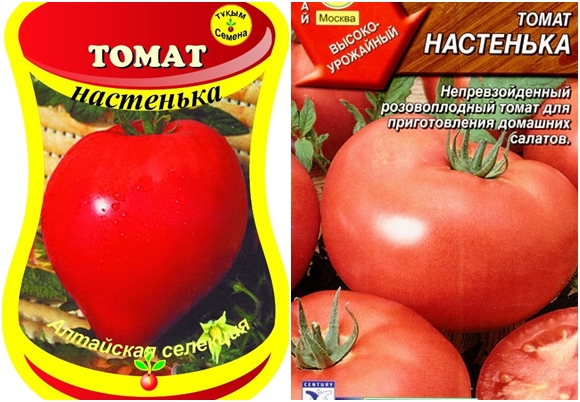
Description of fruits
Fruits are multi-chambered (6 chambers) are heart-shaped, and are pink when ripe. The pulp has an excellent taste, medium density. The average weight of a tomato is from 120 g. Tomatoes yield up to 2 kg per square meter.
Planting and caring for determinant tomatoes
Plants are propagated by seedlings. To get a tomato outdoors, seeds are sown in mid-March. They are germinated in shallow boxes, and in phase 2 of these leaves they dive into individual containers:
- Peat cups.
- Plastic disposable cups.
- In milk cartons with a volume of 0.5 liters.
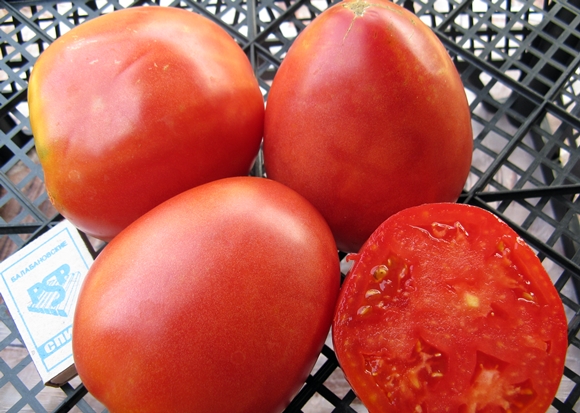
Caring for seedlings of tomatoes of the determinant type is simple. It consists of:
- In watering, which is carried out as the topsoil dries up.
- Combined with watering fertilizing with mineral or complex fertilizers. They are carried out at least 2 times.
- Hardening of seedlings within a week. Hardening is carried out before transplanting plants into the ground.
Transfer to soil
Seedlings that have reached the age of 50-60 days are ready for transplantation. You can take seedlings outside if the soil has warmed up and forecasters are not afraid of frosts on the soil. Prepare the ridges in advance. Dig up the soil, add humus, ash, nitroammofosk and urea to it.
Mark the holes according to the scheme indicated on the package with seeds. Make the row spacing wider, this will greatly facilitate maintenance and improve the sun exposure of the bushes. It is worth planting Nasten's tomatoes in the evening. Water each hole well and cover with humus. The stakes can be placed immediately, but the plants can be tied to them in a week.
Watering and feeding
The first watering after transplanting should be done in 10 days. This time is enough for seedlings to adapt to the soil. During this time, the root system will take root and will be able to absorb moisture and nutrients.
In summer, water according to the weather. If there is no rain, watering should be carried out weekly. Do not fill the soil, but shed it deep enough. Wetting only the top layer of the soil is bad for the development of the tomato bush.
Top dressing should be carried out at least 1 time in 10 days. In the first half of summer, tomatoes require nitrogen. In the second half of summer, the emphasis is on phosphorus and potassium.With temporary cold snaps, plants are helped by foliar feeding with urea, boric acid, iodine.
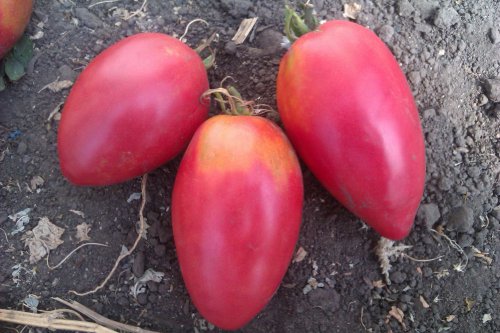
Bush formation
Form the bush according to the scheme suggested by the manufacturer. It is optimal to lead the bush in 2 trunks, removing unnecessary stepchildren on the central stem and side shoots. Even bushes that are compact in shape are best tied to a support, especially during the period of amicable pouring of fruits.
Conclusion
It is imperative to try new varieties and hybrids in your summer cottages. Share the results obtained with other vegetable growers - amateurs, give your description. The new varieties have good disease resistance and high productivity.
